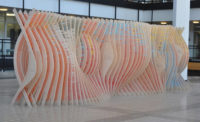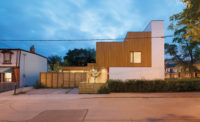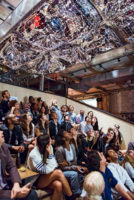Firm to Watch: Latent Design
A young Chicago designer makes her mark as a citizen-architect.






When life gave Katherine Darnstadt lemons, she made an architecture firm.
Fresh out of a job at a midsize firm during the drowsy economy of 2010, Darnstadt, then 28, reckoned kick-starting her own practice was a way to remain afloat until she found a real job. But her contingency plan began to evolve into something more: “If design can be a tool for equity,” she asked herself, “what can that look like, and how can my firm have a place in that?”

Just five years later, Darnstadt's firm, Latent Design, has established itself as one of Chicago's most promising young offices. The firm, which takes on projects ranging from tactical urbanism to branding, has a growing list of accolades, including Crain's Chicago's 2014 “40 under 40” list. The American Institute of Architects called Darnstadt “a shining example of the next generation's citizen-architect” when they gave her their 2013 Young Architects Award.
Latent Design and its three staff members (Darnstadt included) occupy a quaint storefront on Chicago's north side. As its name suggests, the firm considers unseen forces such as political systems and cultural nuances, a philosophy summed up in the tagline “defining the context, designing the content.”
“Design can validate initiatives and ideas. And it can highlight where policies and systems are failing,” Darnstadt explains. “We design for gaps.”
A prime example of this strategy is a 2011 project with Architecture for Humanity Chicago—a mobile produce market in a fleet of tricked-out transit buses deployed in the city's food deserts. Fresh Moves, as it is called, was included in the 2012 Venice Biennale and has been replicated in several other U.S. cities.
The firm has forged long-term relationships with such clients as Grant for Good, a fund for Chicago nonprofits, with whom they partnered to revamp the Chicago Women's Health Center, a clinic devoted to women and transgender health care. Similarly, the firm has designed the H.O.P.E. center—an after-school program run by nonprofit Demoiselle2Femme to empower young African-American women—in a historic firehouse on Chicago's far south side, as well as developing a new STEM-based curriculum.
Latent Design is moving forward at a steady pace; by the time this magazine is printed, it will have wrapped up a prototype program for the YMCA. The firm recently received its general contractor's license and is designing two park field houses. “I had to figure out a way to make everything work,” Darnstadt says, reflecting on the last five years, “and it's been working.”









